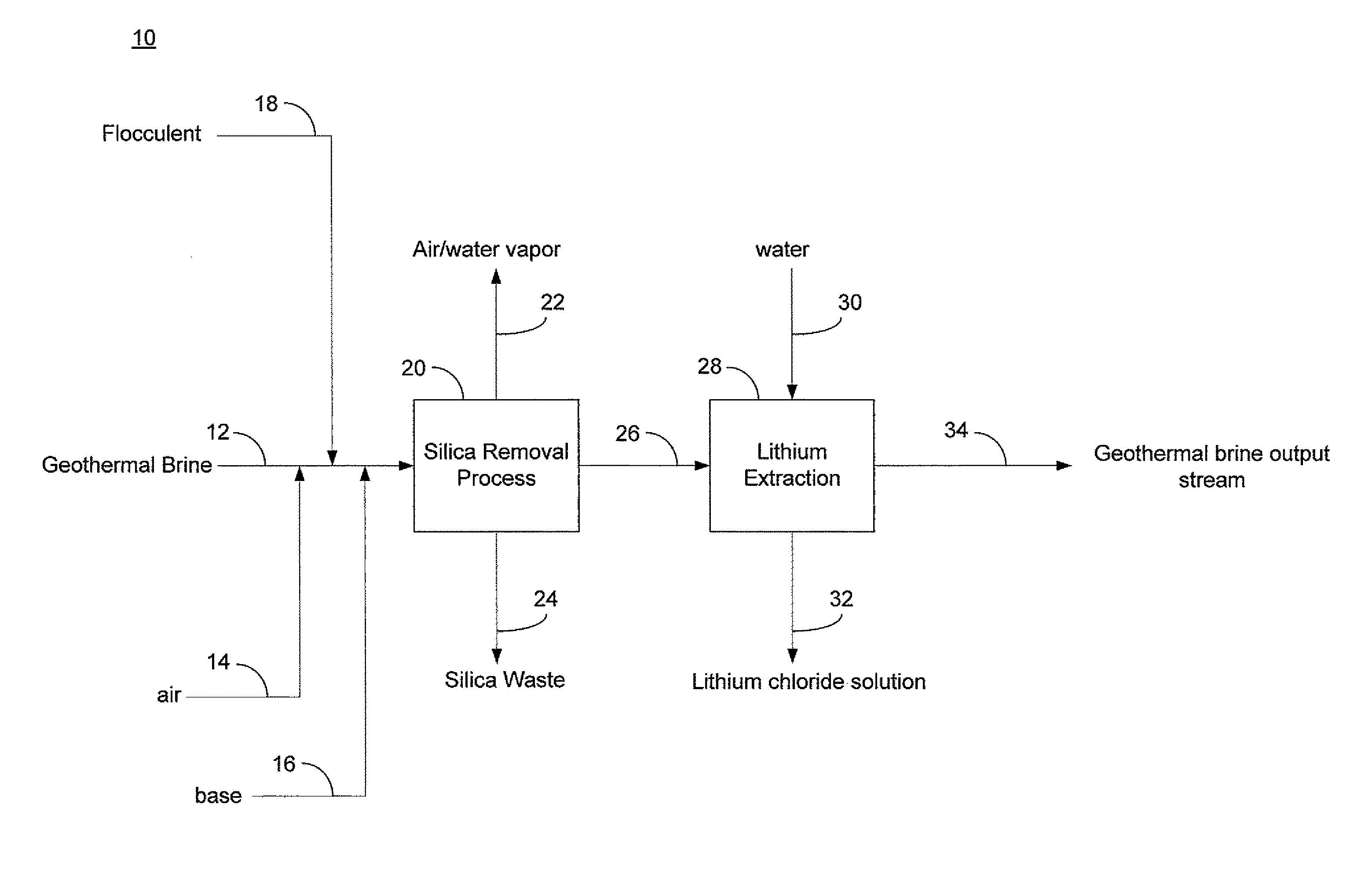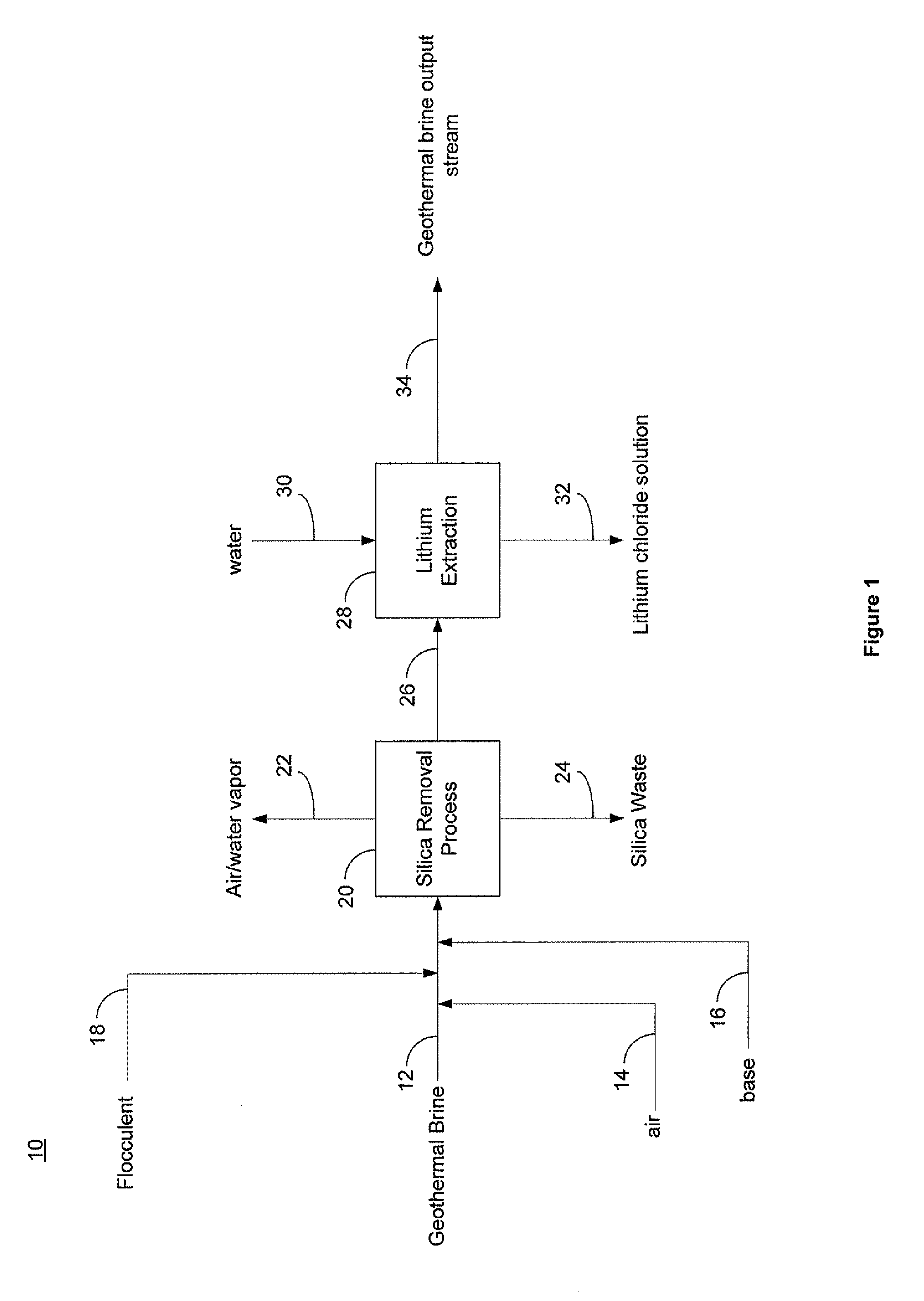Selective removal of silica from silica containing brines
a technology of silica and brine, applied in the field of selective removal of silica from silica containing solutions, can solve the problems of less than complete recovery of silicon from brine, increased recovery costs, and silica being a known problem, and achieve the effect of preventing scale deposit formation
- Summary
- Abstract
- Description
- Claims
- Application Information
AI Technical Summary
Benefits of technology
Problems solved by technology
Method used
Image
Examples
examples
1. Selective Removal of Silica Using Ferrous Iron
[0046]A simulated brine was prepared to simulate the brine composition of Hudson Ranch test wells, having an approximate composition of about 252 ppm lithium, 61,900 ppm sodium, 20,400 ppm potassium, 33,300 ppm calcium, 123 ppm strontium, 728 ppm zinc, 1620 ppm iron, 201 ppm boron, 322 ppm sulfate, 3 ppm fluoride, 201 ppm barium, 57 ppm magnesium, 1880 ppm manganese, 136 ppm lead, 6 ppm copper, 11 ppm arsenic, 160 ppm silicon dioxide, and 181,000 ppm chloride. The simulated brine (1539.2 g) was sparged with air for about 60 min., during which time pH was measured. A calcium hydroxide slurry having 20% solids by weight was added dropwise after 60, 90 and 120 minutes (total weight of the calcium hydroxide slurry added of 13.5 g, 2.7 g dry basis) to the solution. The pH was monitored throughout the reaction and was initially allowed to fall, and was then adjusted to a pH of about 5 with the addition of calcium hydroxide after 60 minutes,...
PUM
 Login to View More
Login to View More Abstract
Description
Claims
Application Information
 Login to View More
Login to View More - R&D
- Intellectual Property
- Life Sciences
- Materials
- Tech Scout
- Unparalleled Data Quality
- Higher Quality Content
- 60% Fewer Hallucinations
Browse by: Latest US Patents, China's latest patents, Technical Efficacy Thesaurus, Application Domain, Technology Topic, Popular Technical Reports.
© 2025 PatSnap. All rights reserved.Legal|Privacy policy|Modern Slavery Act Transparency Statement|Sitemap|About US| Contact US: help@patsnap.com



